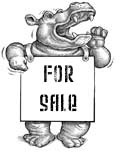
A Cold, Commercial World
WHAT WE HAVE LOST - PART II
I remember living without a car.
I remember weekly trips to the library.
I remember Sunday visits: You did not have to call or await an invitation.
I remember life without Little League and without a Recreation Office.
I remember real neighborhoods.
I remember stay-at-home mothers.
I remember the innocence of movies.
In Milford, Massachusetts, in the 1940s, I remember my mother walking from our home to my father’s locksmith shop to bring him a hot meal for lunch. I was about three or four years old and walked by my mother’s side as she pushed a baby carriage for the one-mile distance to Main Street. For the first 10 years of my life I recall only one member of the extended family who owned an automobile; everyone else walked to and from work and to and from church, and friends and relatives who visited on Sundays or holidays made their journey on foot or hired a taxi. I walked to school and then home for lunch and then back to school for the afternoon session only to walk home again at 3:30. I walked to the town park and back home every day in the summer to play baseball, and I walked to the library at least once a week to select books for the normal pastime of reading. Walking was a way of life for all ages, and only the elderly or handicapped used taxis for regular transportation. Bus transportation was available for those who worked in mills or factories too distant to walk.
Walking simplifies life, and it invigorates health. One learns to explore his immediate surroundings and to visit all the places of interest within walking distance. In a town of 15,000, the number of sites and places of interest north, south, east, and west seemed boundless. North Pond, Bear Hill, Prospect Heights (the Armenian and Portuguese section), the Milford Town Library, East Main Street (the Italian section), the Milford quarries, and Lake Nipmuc all seemed to a child like separate regions on the map of a large country, and Milford seemed like a universe rather than a town. Walking to and from all these places gave them a concrete reality and distinctive character so that one could either see, hear, or smell some unique sensation with each locale. The fresh smell of Kennedy’s peanut butter in a downtown store; the sounds of Italian on the lips of immigrants from the old country; the dusty, antique look of the Milford locksmith shop with its rows of keys and jumble of locks; and the immaculate silence and spotless tidiness of the town library imprinted powerful impressions reinforced after each visit. By walking frequently to these various places, the town and all its special places assumed a definite shape and possessed a particular aura; reality was not abstract, vague, dull, or dingy.
Walking impresses upon a person the character of things that sightseeing from an automobile never captures. Walking instills a sense of a normal pace and a natural rhythm and cultivates leisureliness — the opposite of the wild speech and abnormal restlessness that beset many drivers and cause bizarre behavior such as “road rage,” not to speak of fatal accidents. Walking keeps a person in tune with nature, in touch with the earth, and mindful of the body. When the simple pleasure of walking disappears, the whole quality of life suffers as many associate stylish new cars with the height of human happiness.
You May Also Enjoy
Just as Christ made no apologies or compromises in His preaching to the Apostles, so the Apostles make no apologies or compromises with their listeners.
A Male-God Causes Wife-Beating... All Good Dogs Go to Heaven... Sleazy-Chic... Five-Minute Converts... Just Another Animal... Suckers for Drunks... Elderly Anarchists... Underpaid CEO... From the Department of Corrections...
The right kind of NFP course offers a splendid opportunity both for a new Christ-centered evangelization and for teaching the "what" and the "why" of NFP.

